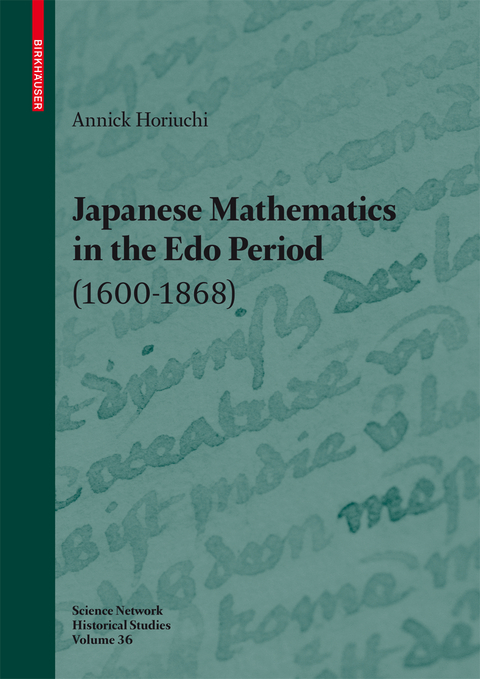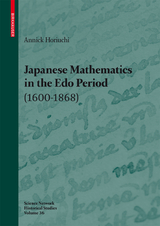Japanese Mathematics in the Edo Period (1600-1868)
Springer Basel (Verlag)
978-3-7643-8744-0 (ISBN)
The Beginnings of Wasan.- The Jink?ki (1627) by Yoshida Mitsuyoshi.- The Jugairoku (1639) by Imamura Tomoaki.- The Sanso (1663) by Muramatsu Shigekiyo.- The Treatise of Ancient and Modern Mathematics (1671) by Sawaguchi Kazuyuki.- Seki Takakazu, His Time and His Mathematical Works.- Seki Takakazu (?-1708) and His Time.- The Works of Seki Takakazu on Techniques for Solving Problems.- Takebe Katahiro, Mathematician and Advisor of the Shogun.- The Career of Takebe Katahiro as Advisor of the Sh?gun.- Takebe's Works on Trigonometry.- Conclusion.
"The book is an extremely attractive gateway into the historical questions surrounding the best-known period of wasan, one written from a modern methodological perspective. ... I was delighted and impressed by this book and its contents, with so many points of contact with and development of traditional Chinese mathematical knowledge." (Jirí Hudecek, East Asian, Science, Technology, and Medicine, Issue 37, 2014)
"The present volume is a very careful English translation of a book which has been first published in French in 1994. ... readers will also get from these a visual apprehension of what Japanese mathematical texts physically looked like during the Edo period. Anyone interested in Japanese mathematics and its multifarious aspects ... should first have recourse to this outstanding book in as much as his excellent critical apparatus open wide perspectives for future researches in such a domain." (Jean-Claude Martzloff, Zentralblatt MATH, Vol. 1206, 2011)| Erscheint lt. Verlag | 6.9.2010 |
|---|---|
| Reihe/Serie | Science Networks. Historical Studies |
| Übersetzer | Silke Wimmer-Zagier |
| Zusatzinfo | XXVII, 350 p. |
| Verlagsort | Basel |
| Sprache | englisch |
| Original-Titel | Les mathématiques japonaises à l'époque d'Edo (1600-1868). Une étude des travaux de Seki Takakazu (?-1708) et Takebe Katahiro (1664-1739) |
| Maße | 155 x 235 mm |
| Gewicht | 692 g |
| Themenwelt | Mathematik / Informatik ► Mathematik ► Allgemeines / Lexika |
| Mathematik / Informatik ► Mathematik ► Geschichte der Mathematik | |
| Schlagworte | Algebra • Calc • Calculus • Development • DEX • Edo Period • Form • Information • Japanese Mathematics • Japan, Geschichte; Geistes-/Kultur-G. • Japan, Geschichte; Geistes-/Kultur-Geschichte • Mathematica • Mathematics • Mathematiker • Mathematiker (Einz.) • Problem Solving • Shogun • techniques |
| ISBN-10 | 3-7643-8744-0 / 3764387440 |
| ISBN-13 | 978-3-7643-8744-0 / 9783764387440 |
| Zustand | Neuware |
| Haben Sie eine Frage zum Produkt? |
aus dem Bereich




